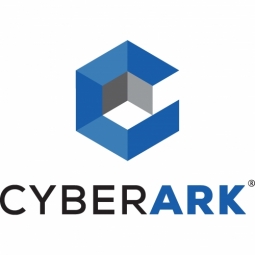技术
- 基础设施即服务 (IaaS) - 云计算
- 传感器 - 温度传感器
适用行业
- 国家安全与国防
适用功能
- 产品研发
- 质量保证
用例
- 周边安全与访问控制
- 篡改检测
服务
- 系统集成
关于客户
Capcom 是全球领先的游戏机、个人电脑、手持设备和无线设备互动娱乐开发商、发行商和分销商。该公司成立于 1983 年,已开发了数百款游戏,包括《Resident Evil™》、《Monster Hunter™》、《Street Fighter™》、《Mega Man™》、《Devil May Cry™》和《Ace Attorney™》等开创性系列游戏。 Capcom 在美国、英国、德国、法国、香港、台湾、新加坡和东京开展业务,公司总部位于日本大阪。截至2022年3月31日,该公司净销售额为1100.54亿日元,拥有员工3,206人。
挑战
Capcom 是全球领先的互动娱乐开发商、发行商和分销商,在改进安全措施方面面临着重大挑战。公司的游戏业务以先进的技术开发能力着称,在基础技术的基础上开发自己的游戏引擎。这种专有技术方法使 Capcom 成为游戏行业的领导者。然而,游戏开发部门为每个项目使用专用的开发环境来处理重要的数据资产,这需要严格的安全措施并遵守每个国家和地区的法律法规。 Capcom 一直专注于加强安全措施,但为了研究更先进的措施和更高级别的保护,成立了专门的开发安全工作组。该工作组开始研究引入技术和机制来保护宝贵的信息资产。
解决方案
为了加强安全措施,Capcom 的开发安全工作组咨询了多家 IT 供应商,并采纳了 Japan Business Systems (JBS) 的一项提案,该提案的重点是在不影响生产力的情况下使开发环境更加安全和透明的解决方案。 Capcom 对特权访问管理解决方案表现出了浓厚的兴趣。为了满足这些需求,Capcom 选择 CyberArk Privileged Access Manager 作为其特权访问管理解决方案。该解决方案支持现有的基于Linux的开发环境,并满足Capcom安全团队的严格要求。 CyberArk Privileged Access Manager不需要在每台服务器上安装代理,因此对开发环境的影响很小。无代理功能有助于减少工作量,因为每个项目都涉及设置许多服务器并在开发完成后关闭它们。特权访问管理功能可确保 ID/密码即使对服务器管理员也是保密的,并且可以轻松创建只能通过 CyberArk 特权访问管理器访问的流程。
运营影响
数量效益

Case Study missing?
Start adding your own!
Register with your work email and create a new case study profile for your business.
相关案例.

Case Study
Data Capture for Afghanistan Forces
Electronic equipments on the field of Afghanistan provided information on the status of the vehicle and to identify potential threats surrounding it to the British Force. The monitoring and interpretation of this data requires robust and sophisticated digitization for data capture and communication.
Case Study
Enhancing Security and Compliance in Remitly's Global Money Transfer Service with Fastly
Remitly, an online remittance service, was faced with the challenge of securing its proprietary global transfer network. The company needed a security solution that could meet PCI requirements and protect customers' sensitive transactions through its mobile application. The solution had to be capable of defending against new and emerging attack types without impacting performance. Remitly also had to deal with irregular traffic patterns, such as a sudden spike in account transfers from a small network segment on the Pacific coastline of South America. The company needed to determine in real time whether such traffic indicated an attack or valid requests. A traditional web application firewall (WAF) would not be able to distinguish this traffic, potentially leading to customer frustration if the IP was blacklisted.

Case Study
Major Aerospace Company Automates Asset Management
The O&M division of an aerospace and global security company was using spreadsheets to manually track more than 3,000 assets assigned to students and staff. Maintaining audit trails for this high volume of equipment became increasingly time-consuming and challenging. The chore involved knowing precisely what equipment was on hand, what had been issued, its location and the name of the custodial owner of each item. Every aspect of this task was carried owner of each item. Every aspect of this task was carried out by individuals with spreadsheets. Manually documenting the full lifecycle of each asset added to the burden. This included tracking maintenance requirements and records, incidents and damages, repairs, calibrations, depreciation, and end-of-life data.

Case Study
Securing a Large Data Center in the EMEA Region: An IoT Case Study
A leading data-center operator in the EMEA region, with multiple facilities spanning over 25,000 square meters, faced significant security challenges. The operator experienced interruptions in their internal IT network due to unsupervised work of third-party technicians. Despite having a high-end building control system that provided 24x7 monitoring and control to all the building’s infrastructure, the data center was vulnerable from a cyber perspective as it was connected to the IT network infrastructure. The operator launched an urgent OT cyber security project that included both IT-OT network segmentation and OT network asset mapping and anomaly detection. The main objectives were to harden the security of the server systems, secure the facility’s power supply and server cooling system, strengthen the segmentation between building and operational systems, create a visual OT network map, and set up a system for presenting supply-chain attacks that may threaten the data center through equipment vendors’ maintenance activities.

Case Study
Leveraging Graph Technology for Enhanced Cybersecurity: A Case Study on MITRE's CyGraph
MITRE, a federally-funded, not-for-profit company that manages seven national research and development laboratories in the United States, was grappling with the challenge of managing an influx of cybersecurity data. The constant changes in network environments were impacting the security posture of U.S. government agencies. Intrusion alerts, anti-virus warnings, and seemingly benign events like logins, service connections, and file share access were all potentially associated with adversary activity. The cybersecurity researchers at MITRE needed to go beyond rudimentary assessments of security posture and attack response. This required merging isolated data into higher-level knowledge of network-wide attack vulnerabilities and mission readiness. The challenge was not the lack of information, but the ability to assemble disparate pieces of information into an overall analytic picture for situational awareness, optimal courses of action, and maintaining mission readiness. The team also struggled with fully comprehending a given security environment and mapping all known vulnerabilities.

Case Study
Enhancing Security Precision with IoT: A Case Study of Guardsman Group
Guardsman Group, a leading security company in the Caribbean, faced a significant challenge in maintaining the security of its digital infrastructure. The company provides security equipment, personnel, and systems for various businesses across the region. However, one of its offices experienced a security incident that affected all communications at that location. The existing security tools were not sufficient to provide the necessary protection, and it took hours to identify the source of the issue. This incident highlighted the need for a dynamic solution that could proactively identify threats. The company's primary concern was any disruption to its business, as it manages a significant portion of Jamaica's money and cannot afford for its operations to go down.







